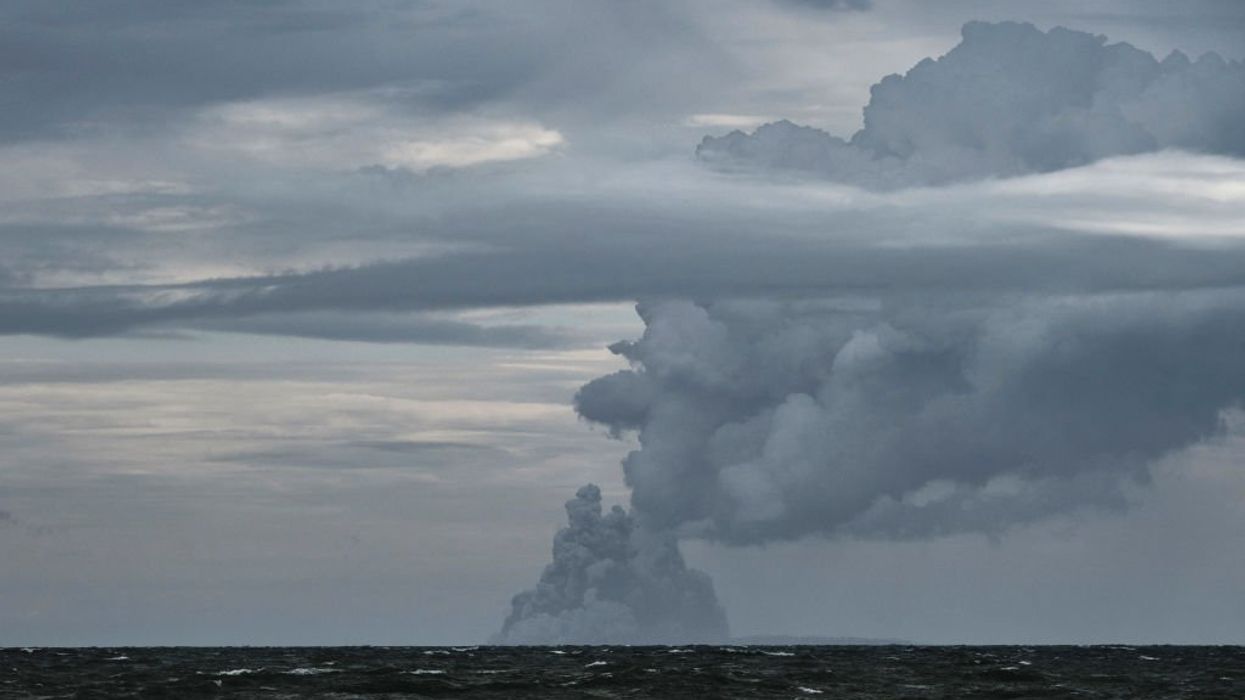
Photo by Ed Wray/Getty Images

The United Nations published an in-depth document outlining possible "Solar Radiation Modification" programs, otherwise describing a series of methods to cool the earth's temperature in emergency situations. More than one of these methods has been backed by Bill Gates.
The document, titled "One Atmosphere: An Independent Expert Review on Solar Radiation Modification Research and Deployment," contains a lengthy disclaimer admitting that there is "little information on the risks of SRM" and that there needs to be "robust, equitable and rigorous trans-disciplinary scientific review process to reduce uncertainties."
However, some of the suggested methods may need a little bit more than a rigorous review.
The first suggested method involves stratospheric aerosol injections, or "SAI," which involve "injecting highly reflective sub-micron-size particles into the stratosphere," requiring aircrafts that can release the particles at an altitude of 20-25 kilometers.
The idea was theorized around 2017 and then subsequently experimented with by Bill Gates and Harvard University in 2018.
Another method is known as "marine cloud brightening," which "would be achieved by introducing sea salt aerosols to produce a larger number of smaller cloud droplets, thus ‘brightening’ clouds."
Essentially, this means shooting salt water into the clouds to reflect sunlight.
A third method involves simulating the effects of a volcanic eruption that blocks out the sun's rays.
Citing "global cooling in the years following Mount Pinatubo volcanic eruption in 1991," the U.N. believes that mimicking the effects of toxic gases that cover the earth's atmosphere after a volcanic eruption could be used to lower the earth's temperature.
This would also be achieved by aerosol injection in the atmosphere, using sulfur dioxide in both recommendations for cooling using SAI. The publication boasts that if poisonous gas is injected into the atmosphere at a yearly rate, the global temperature could reduce upward of two to five degrees Celsius.
Sulfur dioxide is described as "a toxic gas responsible for the odor of burnt matches. It is released naturally by volcanic activity and is produced as a by-product of copper extraction and the burning of sulfur-bearing fossil fuels."
"For example, the 1991 Mount Pinatubo eruption caused global annual-mean cooling of about 0.3–0.5°C in the following two years," the document reads.
"It is estimated that continuous injection rates of 8–16 Tg of sulphur dioxide (SO2) per year ... would reduce global mean temperature by 1°C," it continues.
"An operational SAI deployment could be scaled up to produce global cooling of 2–5°C, albeit with diminishing returns at higher rates of injections," the study estimates.
Simply put, with yearly injections of eight to 16 teragrams of volcanic gases into the atmosphere, the earth could be cooled at a very quick speed.
A teragram is the equivalent to one trillion grams.
This method was also backed by Bill Gates in 2019.
Other suggestions include "whitening the roofs of urban buildings" with paint to make them more reflective, genetically modifying the color of crops to make them reflect sunlight, and of course "space mirrors."
The idea is placing "mirrors or reflecting particles in space between the Sun and Earth to reflect sunlight back to space."
Like Blaze News? Bypass the censors, sign up for our newsletters, and get stories like this direct to your inbox. Sign up here!
Andrew Chapados